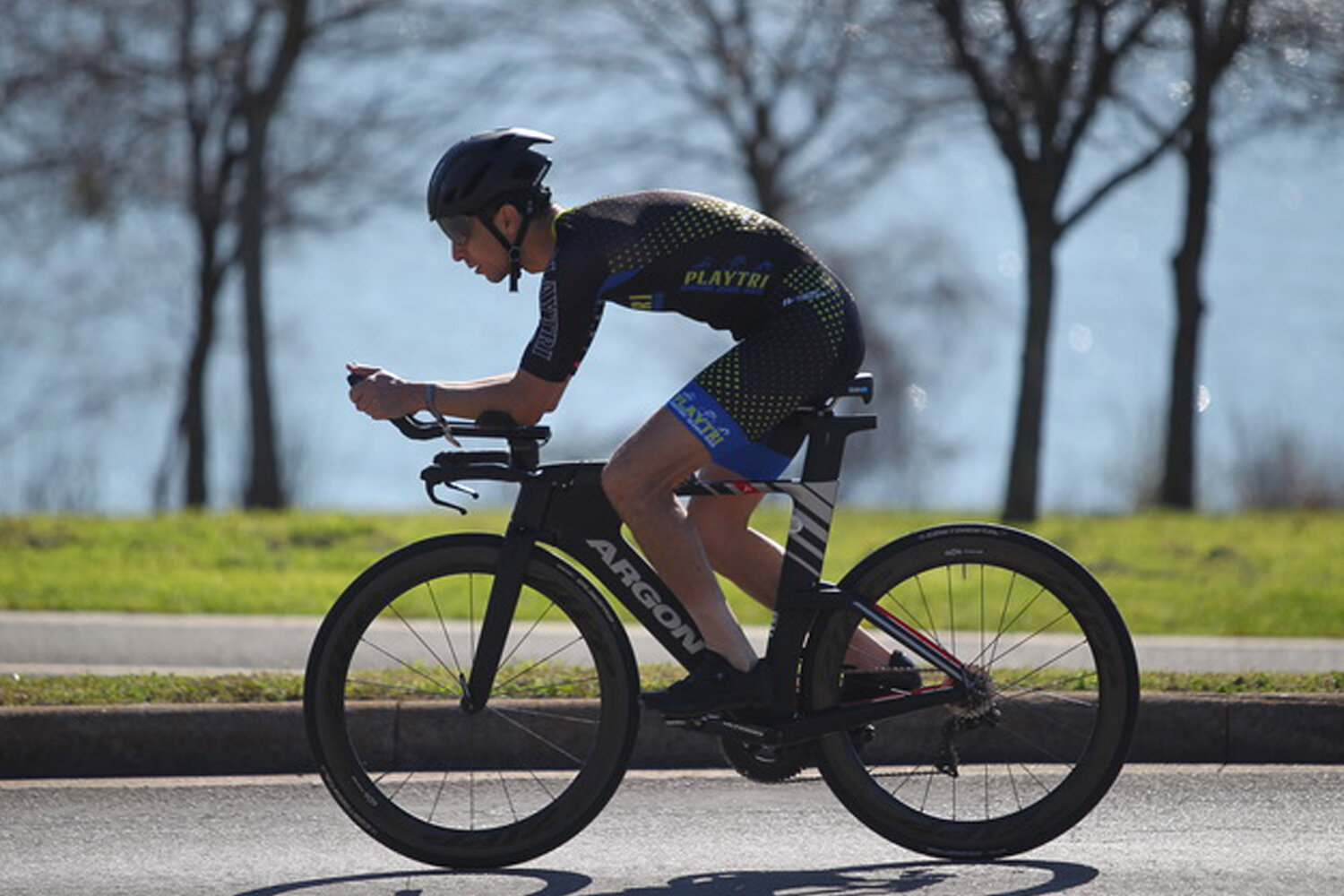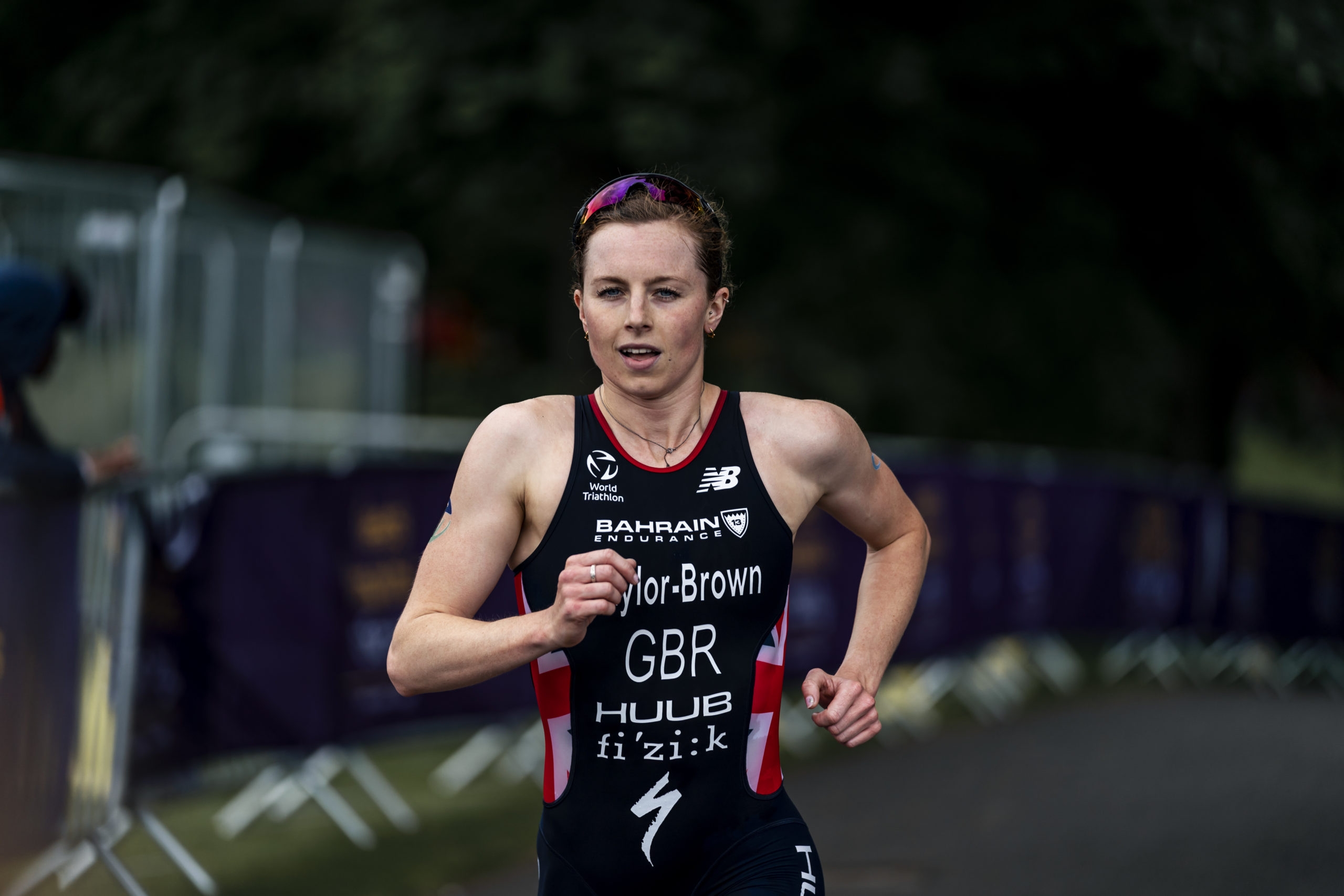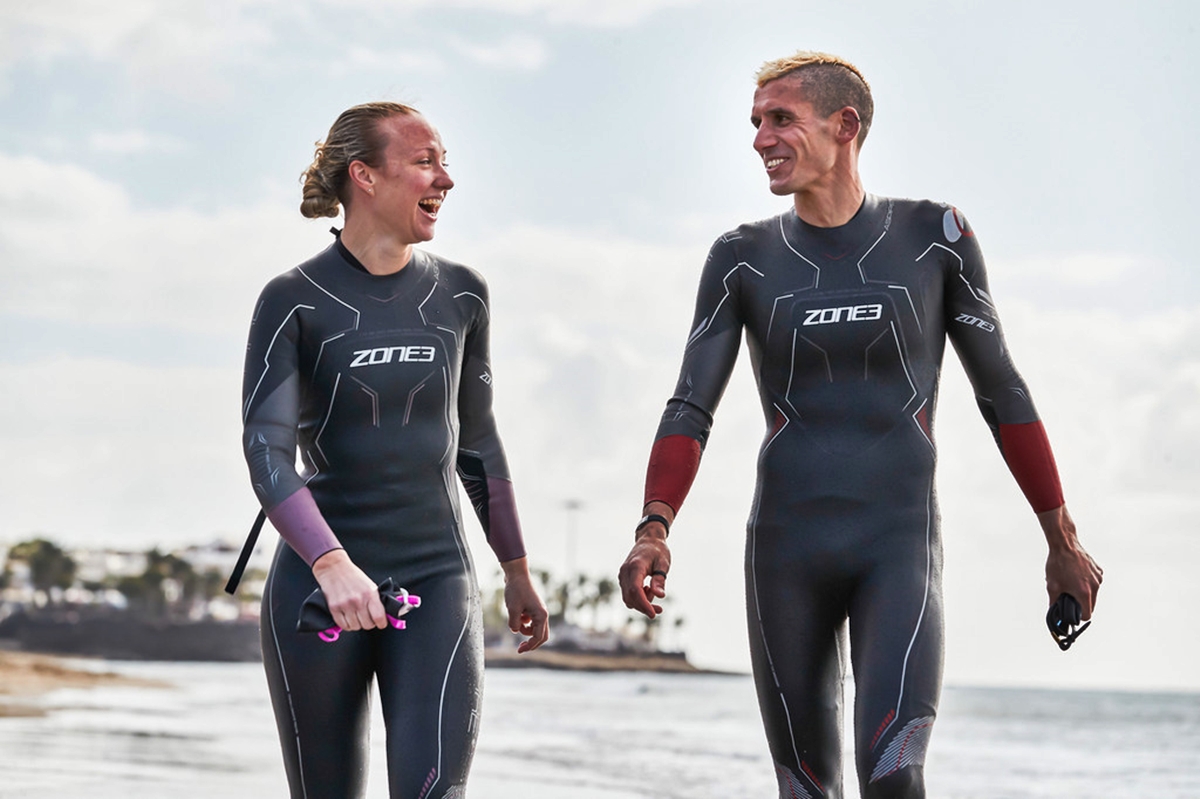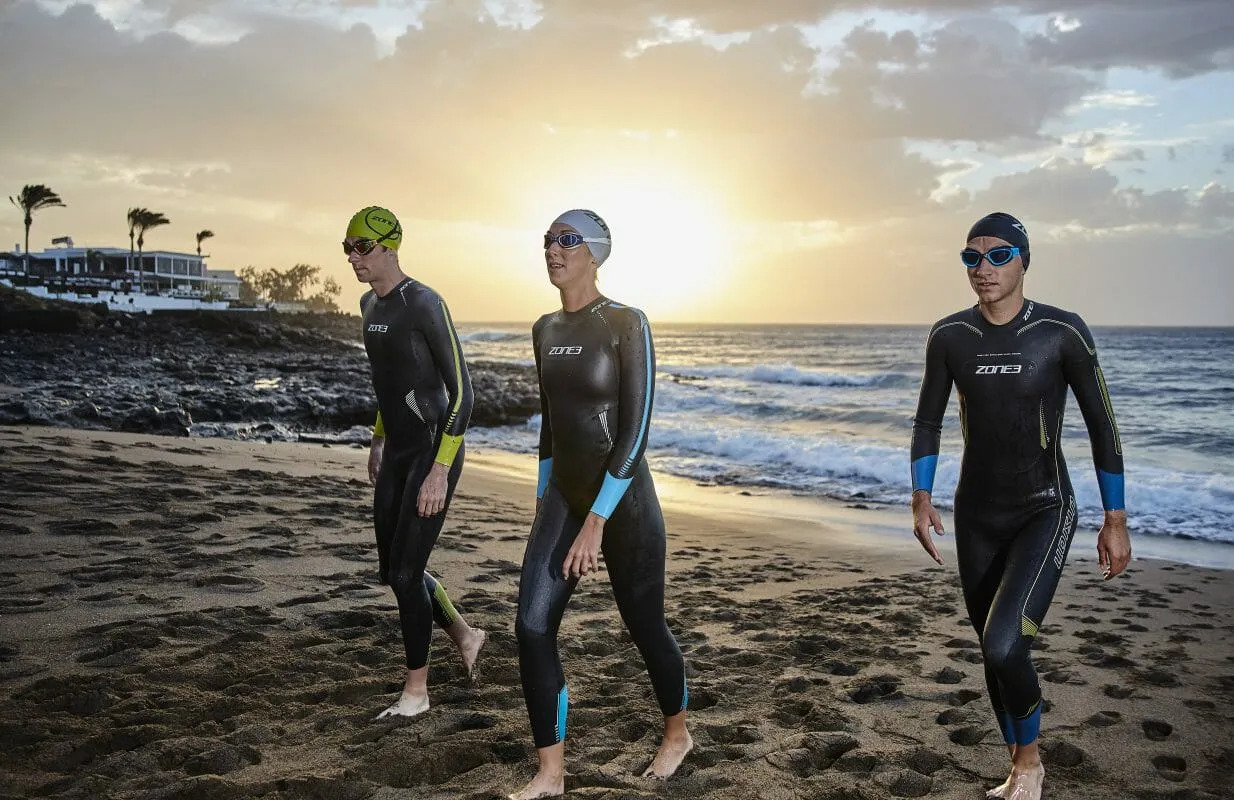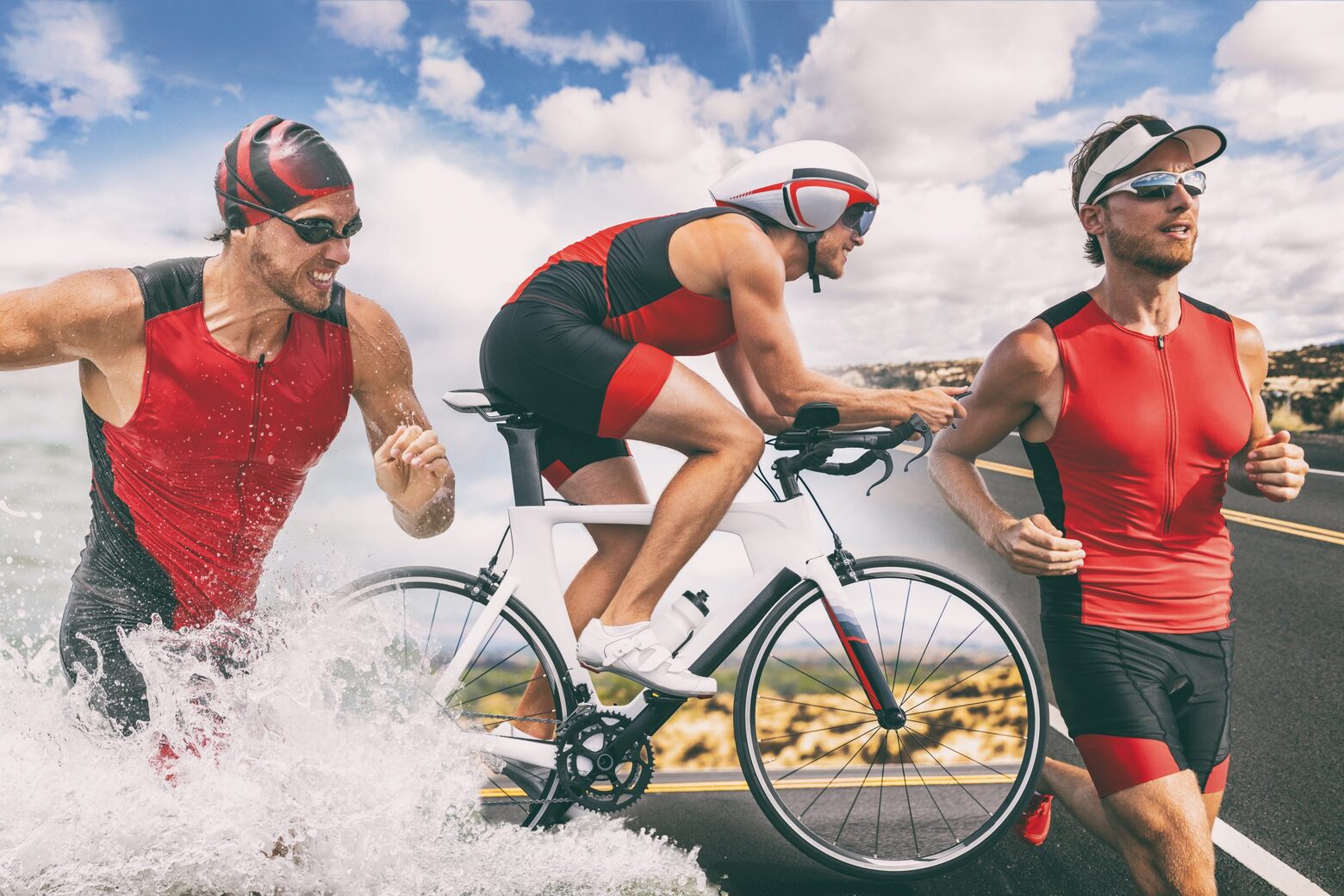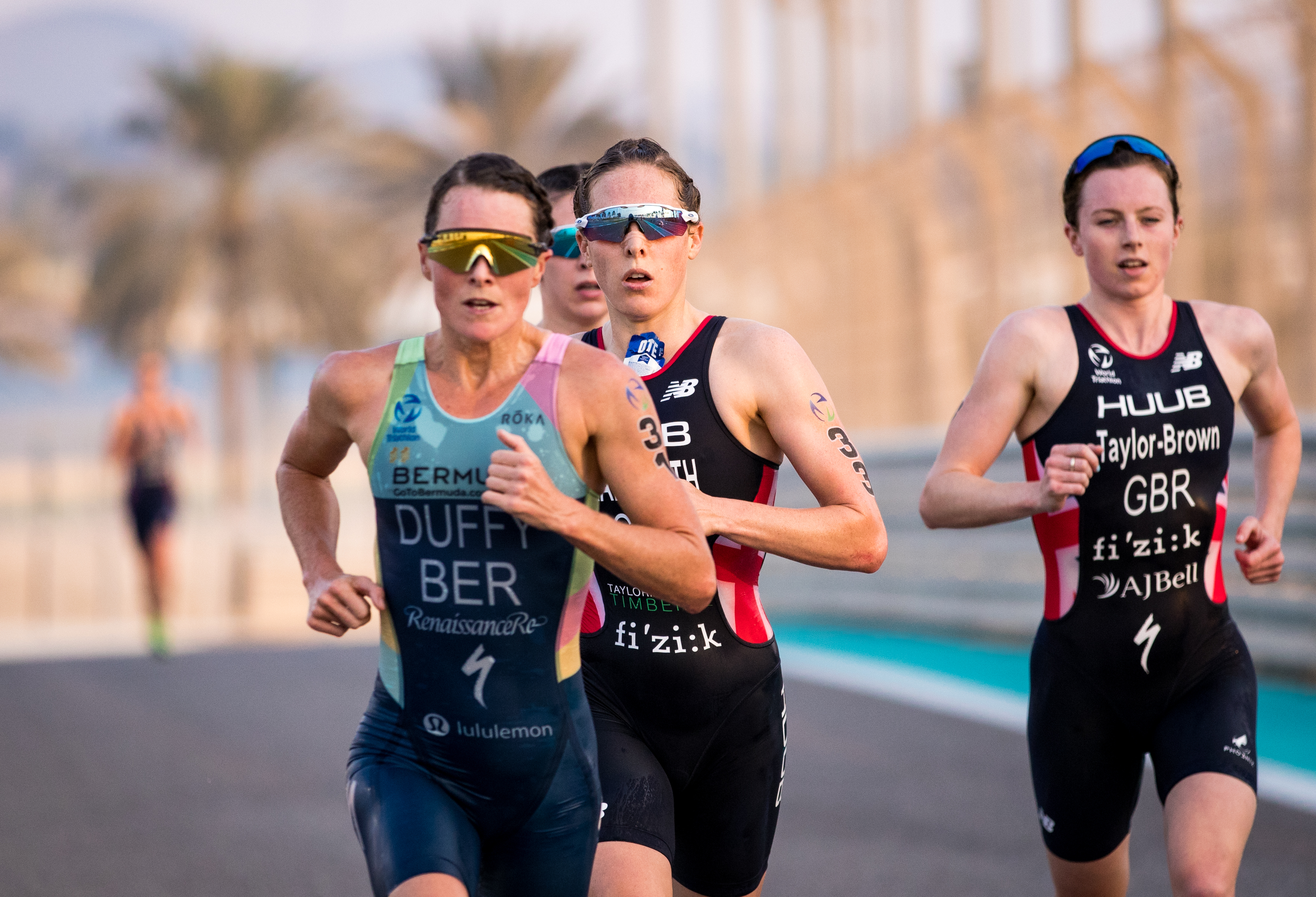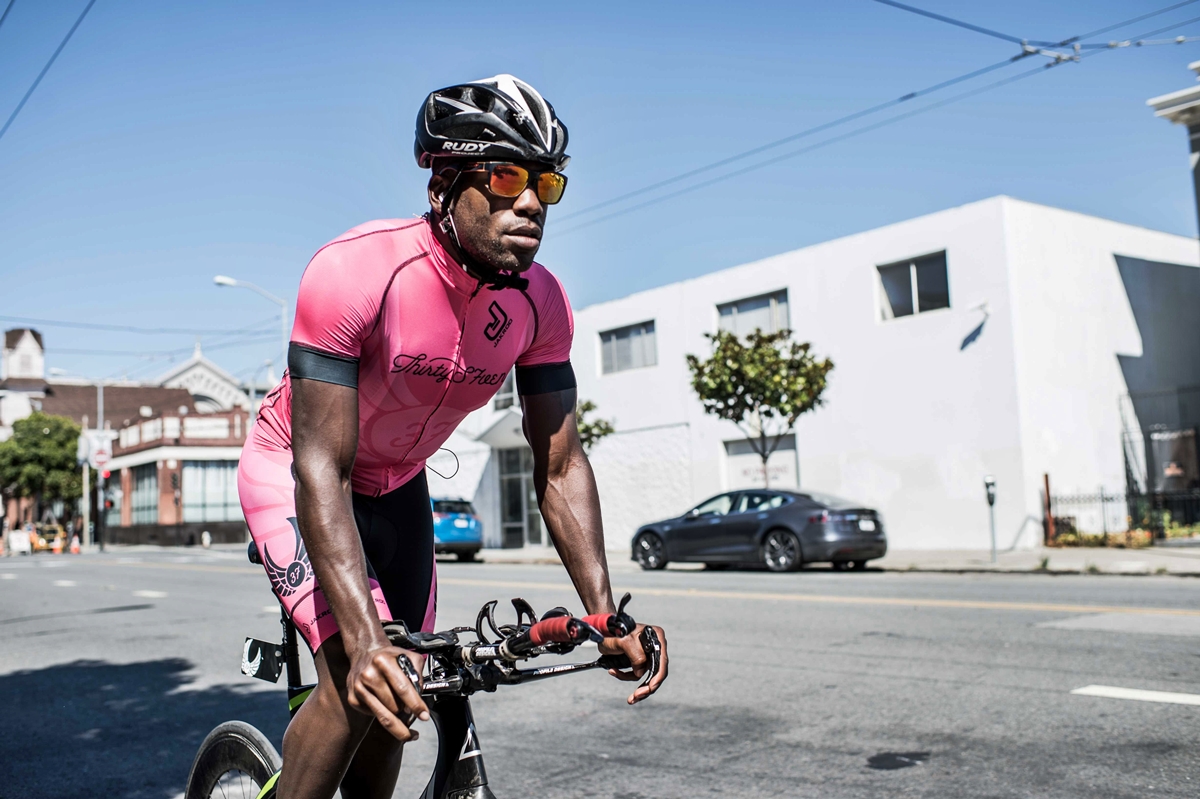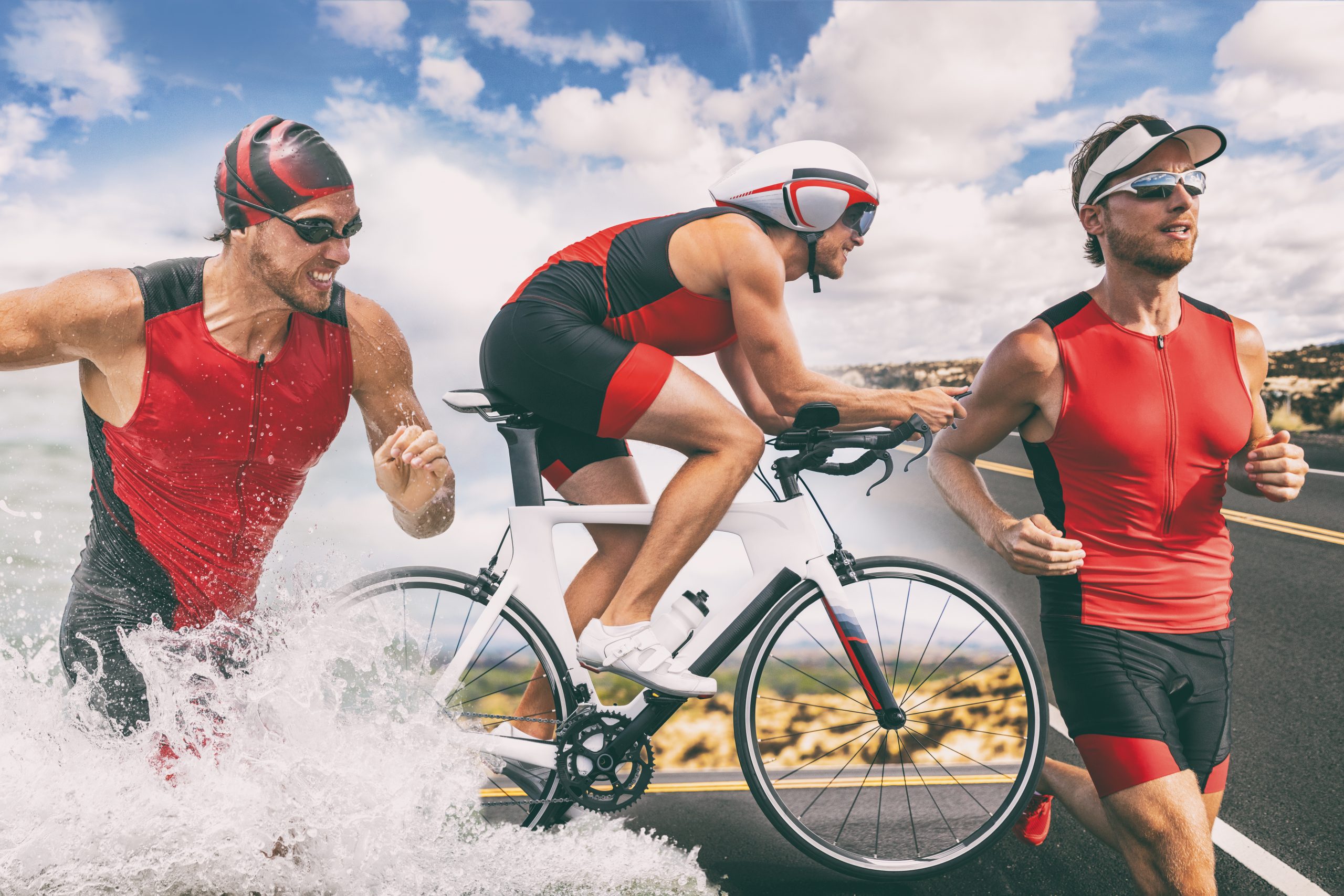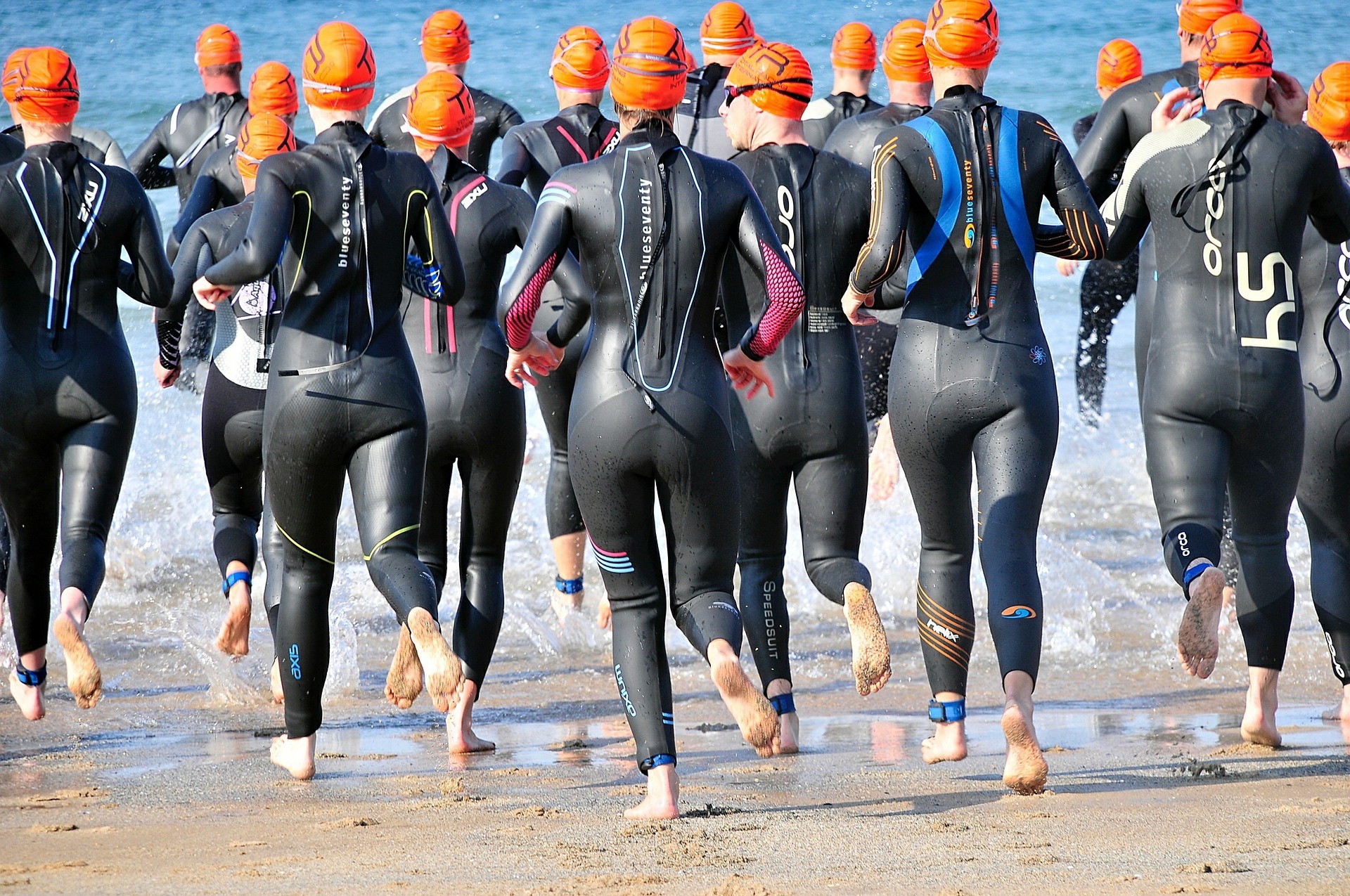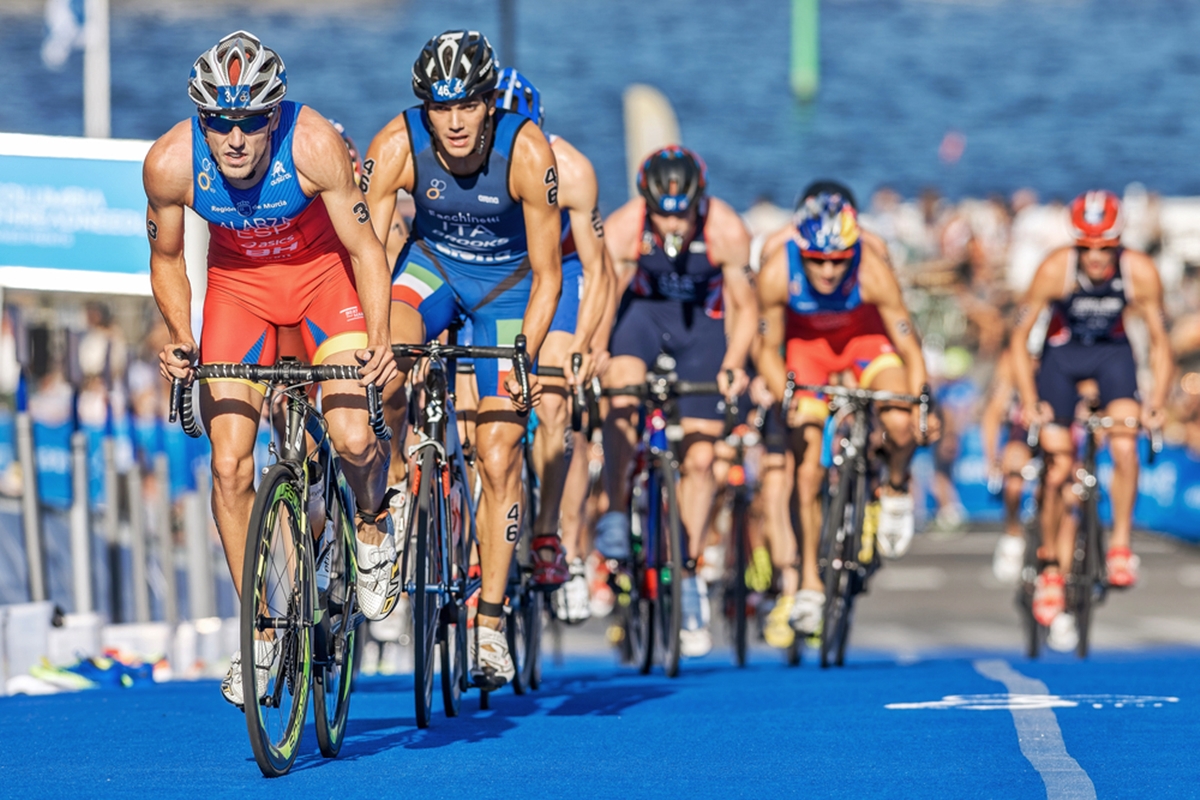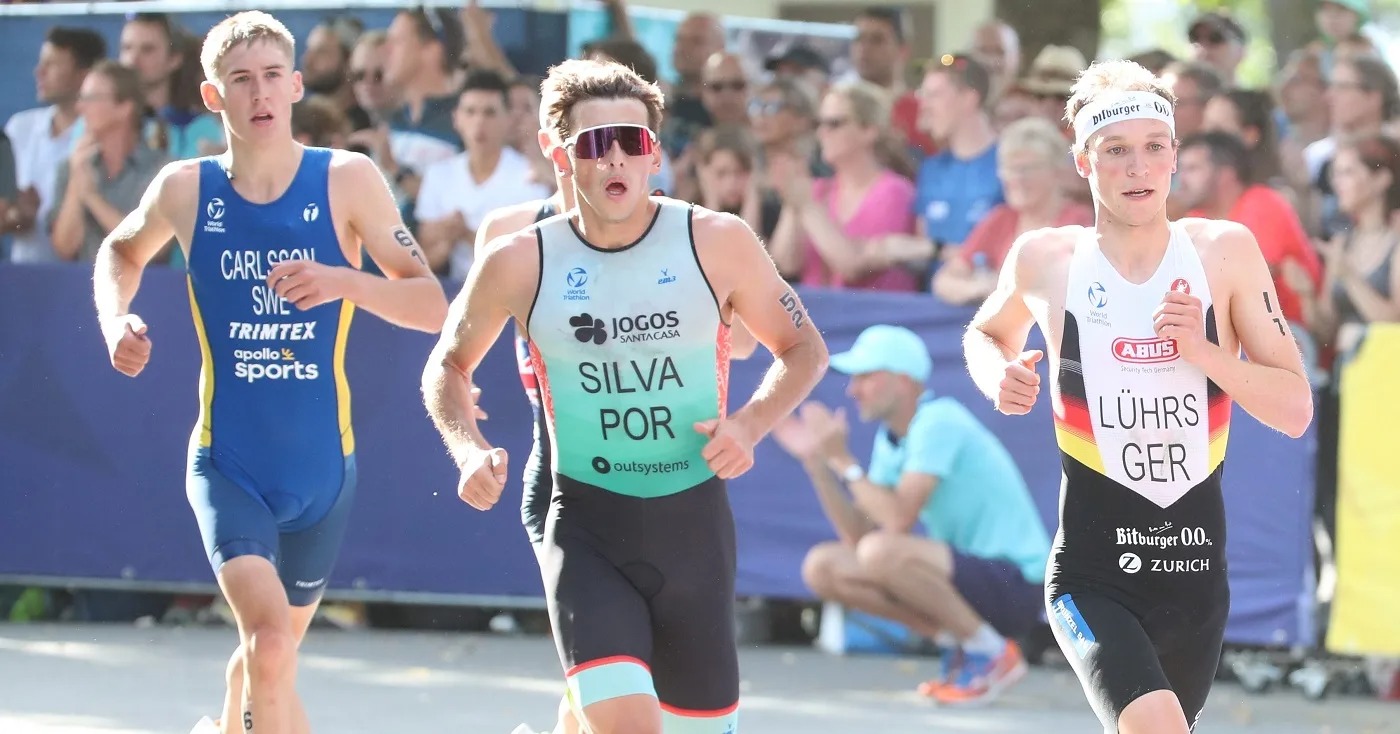

Featured
What To Look For In A Triathlon Suit
Modified: May 22, 2024
Discover what qualities make a triathlon suit stand out from others in this comprehensive guide. Find out all about the featured options and choose the perfect suit for your next race.
Introduction
Welcome to the world of triathlons, where athleticism, endurance, and a passion for pushing one’s limits collide. As a triathlete, you know that every second counts, and having the right gear can make all the difference in your performance. One essential piece of equipment that can greatly impact your race is a triathlon suit.
A triathlon suit is not your average swimwear or athletic gear. It is designed specifically for the demands of the sport, offering a combination of comfort, durability, and functionality. Whether you are a seasoned triathlete or a beginner just starting out, choosing the right triathlon suit is crucial to your overall experience and success on race day.
In this article, we will explore the key factors to consider when selecting a triathlon suit. From comfort and fit to material and durability, we will delve into the details that can make or break your experience in the water, on the bike, and during the run. So, let’s dive in and discover what to look for in a triathlon suit to elevate your performance and enhance your triathlon journey.
Comfort and Fit
When it comes to a triathlon suit, comfort is paramount. After all, you’ll be spending hours in this garment, transitioning from swimming to cycling and running. The suit should fit like a second skin, allowing for unrestricted movement and minimizing any irritation or discomfort.
Look for a triathlon suit that offers a snug yet comfortable fit. It should be tight enough to reduce drag in the water while still providing enough flexibility for easy movement during the other legs of the race. Consider features like adjustable straps, stretchy materials, and a contoured design that molds to your body shape.
The suit should also have flatlock seams. These seams lie flat against the skin, preventing chafing and reducing the risk of irritation, even during prolonged activities. Additionally, check for a no-chafe inner lining that enhances overall comfort.
Keep in mind that fit is highly individual, and what works for one person may not work for another. Opt for brands that offer different sizes and consider trying on multiple sizes to find the perfect fit. Graduated compression can also provide support and aid in muscle recovery, so consider this feature if it aligns with your preferences.
In summary, prioritize comfort and fit when selecting a triathlon suit. It should feel comfortable against your skin, promote unrestricted movement, and have features that reduce the risk of chafing and irritation. By finding a suit that fits well, you’ll be able to focus on your performance without any distractions or discomfort.
Material and Durability
The material of the triathlon suit plays a crucial role in its overall performance and durability. It should be able to withstand the rigors of the sport while maintaining its shape, elasticity, and color over time.
Look for suits made of high-quality, durable materials such as chlorine-resistant polyester or a blend of polyester and spandex. These materials offer excellent durability, resistance to fading, and retention of shape. They should also provide a snug fit without sagging or stretching out after multiple uses.
It’s important to choose a material that is quick-drying. After the swim leg, you’ll want the suit to dry off as quickly as possible to prevent discomfort and chafing during the bike and run. Many triathlon suits feature moisture-wicking properties, which help to pull sweat away from the body and keep you dry throughout the race.
Furthermore, consider the thickness of the material. A suit that is too thin may be prone to transparency and offer less protection against the elements, while a suit that is too thick may cause overheating. Look for a balance that suits the climate and conditions in which you’ll be racing.
Remember that durability goes hand in hand with material quality. Look for reinforced stitching and double-lined panels in high-stress areas to ensure that the suit can withstand the demands of the sport. Checking product reviews and seeking recommendations from other triathletes can provide insight into the durability of different brands and models.
To summarize, prioritize a triathlon suit made from high-quality, durable materials. Look for a material that is quick-drying and offers moisture-wicking properties. Consider the thickness of the material, ensuring it provides the right balance between protection and breathability. Finally, pay attention to reinforced stitching and double-lined panels for increased longevity.
Moisture-Wicking Abilities
During a triathlon, your body will generate a significant amount of sweat as you push your limits in each leg of the race. That’s why it’s essential for a triathlon suit to have excellent moisture-wicking abilities. This feature will help keep you dry and comfortable throughout the entire race.
Moisture-wicking refers to the fabric’s ability to pull moisture away from your skin and move it to the outer surface of the garment, where it can evaporate quickly. This process helps regulate your body temperature and prevents the discomfort of excessive sweating. Look for triathlon suits that explicitly advertise moisture-wicking technology.
Many high-performance triathlon suits are made with specialized fabrics that are designed to wick away sweat efficiently. These fabrics are often lightweight, breathable, and have a porous structure that allows moisture to escape easily. Consider suits with mesh panels in strategic areas to maximize ventilation and aid in sweat evaporation.
Moreover, some triathlon suits come with additional features such as anti-bacterial treatments or odor-fighting properties. These features can help keep the suit fresh and reduce unpleasant smells even during long races or multiple uses without washing.
When selecting a triathlon suit, pay attention to the manufacturer’s specifications and customer reviews regarding moisture-wicking abilities. Triathlons can be physically demanding, and a suit with poor moisture-wicking capabilities can lead to discomfort, chafing, and even skin irritation.
In a nutshell, opt for a triathlon suit that possesses excellent moisture-wicking abilities. Look for fabrics specifically designed to pull sweat away from your skin and allow for quick evaporation. Consider additional features like anti-bacterial treatments to keep the suit fresh and odor-free throughout your triathlon journey.
Breathability
When participating in a triathlon, your body temperature can rise significantly due to the intensive physical exertion. This makes breathability a crucial aspect to consider when selecting a triathlon suit. A breathable suit allows air to flow through the fabric, regulating your body temperature and preventing overheating.
Look for triathlon suits made from lightweight and breathable materials such as mesh panels or moisture-wicking fabrics. These materials are designed to promote airflow and allow heat to escape, keeping you cool and comfortable during the race.
Strategic placement of mesh panels in areas prone to perspiration, such as the underarms, back, and sides, can enhance breathability. These ventilation zones help to increase air circulation and prevent the build-up of heat and moisture.
In addition to the material and construction, consider features like perforations or laser-cut vents, which aid in improving breathability. These small details can make a noticeable difference in keeping you comfortable and preventing the accumulation of sweat.
It’s important to balance breathability with durability. While a highly breathable material may provide optimal airflow, it can also be more prone to wear and tear. Look for a triathlon suit that strikes a balance between breathability and durability based on the climate and conditions in which you’ll be racing. Consider seeking recommendations from other triathletes who have raced in similar conditions.
In summary, prioritize a breathable triathlon suit that allows for proper airflow and heat dissipation. Look for lightweight and breathable materials such as mesh panels or moisture-wicking fabrics. Consider features like perforations or laser-cut vents to enhance breathability. Strike a balance between breathability and durability based on the specific climate and conditions of your triathlon.
Range of Motion
Achieving optimal performance in a triathlon requires a full range of motion in all three disciplines. Therefore, it is crucial to choose a triathlon suit that allows for unrestricted movement, ensuring that you can swim, cycle, and run with ease.
Look for a suit that is designed with stretchy and flexible materials, such as spandex or elastane blends. These materials offer excellent elasticity, allowing for a wide range of motions without feeling constricted. The suit should comfortably move with your body, ensuring that you can freely extend your arms and legs without any restrictions or discomfort.
Consider suits that feature articulated or pre-shaped panels, which are strategically placed to enhance mobility. These panels are designed to follow the natural contours of your body, promoting a full range of motion in key areas like the shoulders, hips, and knees.
The fit of the suit also plays a role in the range of motion. Look for suits that are appropriately sized and have a contoured, athletic fit. Oversized or baggy suits can impede your movement and create drag in the water, while overly tight suits can restrict your ability to move freely and comfortably.
If possible, try on the suit and perform some basic movements to assess its range of motion. Bend at the waist, lift your arms overhead, and simulate a running motion to ensure that the suit allows for unrestricted movement in all disciplines.
In summary, prioritize a triathlon suit that offers a full range of motion. Look for suits made from stretchy and flexible materials, such as spandex or elastane blends. Consider designs with articulated or pre-shaped panels to enhance mobility. Ensure the suit fits properly and allows you to move freely without any restrictions or discomfort.
Padding and Support
When it comes to a triathlon, comfort and support are essential, especially during the cycling portion of the race. That’s why having adequate padding in the right areas can significantly enhance your overall performance and reduce discomfort.
Look for a triathlon suit that offers chamois padding specifically designed for cycling. The chamois is a padded insert strategically placed in the saddle area to provide cushioning and absorb shock. It should be thick enough to offer support and reduce friction, but not too bulky that it hinders mobility or adds unnecessary weight.
The quality and design of the chamois can vary among brands and models, so it’s essential to find one that suits your needs. Consider the length and width of the padding, as well as any special features like multi-density foam for targeted support. Triathlon suits with a wider chamois tend to offer more comfort for longer rides.
It’s also important to ensure that the padding is positioned correctly within the suit. Look for suits with an anatomically-designed chamois that conform to the contours of the body, reducing pressure points and preventing chafing. The padding should be well-integrated and securely stitched into the suit to prevent shifting or bunching up during the race.
In addition to padding, consider the level of support offered by the triathlon suit. Look for suits with built-in compression features that provide muscle support and aid in reducing fatigue. These compressive panels can enhance blood circulation, reduce muscle vibration, and improve endurance.
Ultimately, the level of padding and support you require will depend on your personal preferences, the length of the race, and the amount of time you spend cycling. Experiment with different suits and padding options during training to find what works best for you.
In summary, prioritize a triathlon suit with adequate padding and support, particularly in the cycling area. Look for chamois padding that is well-designed and positioned correctly to provide cushioning and reduce friction. Consider suits with compression features for added support and muscle fatigue reduction. Find the right level of padding and support that suits your personal preferences and race requirements.
Zipper and Closure Design
The zipper and closure design of a triathlon suit may seem like a small detail, but it can make a big difference in terms of convenience, comfort, and overall functionality. When choosing a triathlon suit, consider the following aspects of the zipper and closure design.
Firstly, look for a suit with a high-quality and durable zipper. A reliable zipper is essential for quick and easy transitions, especially during the swim-to-bike changeover. Opt for a suit with a YKK or similar brand zipper known for its durability and smooth operation.
Consider the placement of the zipper as well. Most triathlon suits have a front or back zipper design. Front zippers are more common and allow for easy ventilation and temperature regulation during the race. However, back zippers offer a streamlined and sleek appearance, reducing the risk of water drag during the swim leg.
The length of the zipper is also worth considering. A longer zipper allows for a wider opening, making it easier to put on and take off the suit quickly. Look for zippers that extend to the torso or mid-back area to provide ample accessibility.
Furthermore, pay attention to the closure system of the triathlon suit. Some suits feature a traditional zipper closure, while others incorporate additional fastening mechanisms such as Velcro straps or snap buttons. These additional closures provide a secure fit, minimize any potential movement or slippage during the race, and may offer adjustable options for a personalized fit.
It’s also worth noting whether the closure system is located on the front or back of the suit. Front closures are typically more common and convenient for self-dressing and undressing. On the other hand, back closures can offer a more streamlined profile and reduce the risk of accidental unzipping or opening during the race.
Lastly, consider any special features or designs that enhance the functionality of the zipper and closure system. Some suits may have a flap or guard behind the zipper to prevent irritation or rubbing against the skin. Others may incorporate a quick-drying fabric panel around the zipper to aid in moisture management.
In summary, prioritize a triathlon suit with a high-quality and durable zipper. Consider the placement and length of the zipper, as well as the closure system. Look for additional fastening mechanisms that provide a secure fit and adjustable options. Take note of any special features that enhance the functionality and comfort of the zipper and closure design.
Storage Capacity
During a triathlon, having easy access to your nutrition, hydration, and other essentials is crucial. That’s why the storage capacity of a triathlon suit is an important factor to consider. Look for a suit that provides sufficient storage options without compromising comfort or performance.
Many triathlon suits feature pockets strategically placed on the back, sides, or thighs. These pockets offer convenient storage for energy gels, nutrition bars, small bottles, or any other items you may need during the race. Consider the number and size of the pockets, as well as their placement, to ensure they meet your specific needs.
For longer races or events where additional gear may be necessary, look for suits that offer larger storage compartments or removable storage systems. Some suits have expandable or stretchy pockets that can accommodate larger items like a lightweight rain jacket or extra supplies. If the suit doesn’t have built-in storage, check if it has loops or hooks for attaching accessories, such as a race belt or gel flask.
When considering storage options, it’s important to strike a balance between accessibility and aerodynamics. While having easily accessible storage is valuable, bulky or poorly placed pockets can create drag in the water and hinder performance. Look for pockets that sit close to the body and have secure closures, such as zippers or flaps, to prevent items from bouncing or falling out during the race.
Keep in mind that the storage capacity of a triathlon suit may vary depending on the brand and model. Read product descriptions and customer reviews to get an idea of the suit’s storage capabilities and functionality. It can also be helpful to try on the suit while wearing your race essentials to ensure a proper fit and ensure that you’re able to access your items comfortably.
In summary, choose a triathlon suit that offers sufficient storage capacity for your race essentials. Consider the number, size, and placement of pockets or compartments. Strive for a balance between accessibility and aerodynamics. Read product descriptions and reviews, and try on the suit with your race essentials to ensure a proper fit and functionality.
Style and Design Options
While the primary focus of a triathlon suit is performance and functionality, that doesn’t mean you have to sacrifice style. Triathlon suits come in a variety of styles and designs, allowing you to express your personal taste while still obtaining the technical features you need for race day.
Consider the overall design and aesthetics of the triathlon suit. Styles range from simple and sleek to bold and vibrant. Some suits feature a single color with minimal branding, while others may have eye-catching patterns, graphics, or sponsor logos. Choose a design that resonates with you and reflects your personality as an athlete.
Additionally, pay attention to the fit and cut of the suit. Triathlon suits generally come in two-piece or one-piece options. Two-piece suits consist of a separate top and bottom, offering more versatility in terms of size and fit. One-piece suits provide a streamlined and aerodynamic profile. Decide which style you prefer and feel most comfortable in.
It’s also worth considering the materials and finishes used in the suit’s design. Look for features like reflective details for increased visibility during low-light conditions. Some suits incorporate UV protection to shield your skin from the sun’s harmful rays during outdoor races. Explore the various options available and choose a suit that aligns with your preferences and needs.
While style and design are important, remember that performance should still be the primary consideration. Ensure that the suit meets all the functional requirements for a triathlon, such as proper fit, comfort, durability, and functionality.
Lastly, don’t forget about the practicality of the suit’s design. Check for features like zippered closures, adjustable straps, and easy-to-reach pockets. These elements enhance convenience before, during, and after the race, making it easier for you to focus on your performance rather than struggling with your gear.
In summary, consider the style and design options when choosing a triathlon suit. Look for a design that resonates with your personal style and preferences. Decide between a two-piece or one-piece suit based on your comfort and performance needs. Pay attention to additional features like UV protection or reflective details. Prioritize the functional aspects of the suit while still looking for a design that suits your style.
Price and Value for Money
The price of a triathlon suit can vary greatly depending on the brand, quality, and features it offers. While it’s important to consider your budget, it’s equally crucial to assess the value for money that a suit provides.
When evaluating the price of a triathlon suit, consider the materials used, the level of technology and innovation incorporated, and the overall durability of the suit. Higher-priced suits often use premium materials that offer enhanced performance, durability, and comfort. They may also come with additional features such as advanced ventilation systems, specialized padding, or extra storage options.
However, keep in mind that a higher price does not always guarantee the best value. It’s essential to balance the features and quality with your specific needs as an athlete. Sometimes, a more affordable suit may provide all the essential functionality you need for your races without adding unnecessary costs.
Research different brands, read product reviews, and seek recommendations from other triathletes to gauge the value and durability of a particular suit. Consider the reputation and credibility of the manufacturer in delivering high-quality products to ensure that you’re investing in a suit that will last.
It’s also worth considering the frequency and level of your triathlon involvement. If you’re a frequent participant or a competitive athlete, investing in a higher-priced suit with advanced features may be more suitable. On the other hand, if you’re a beginner or participate in triathlons infrequently, a more budget-friendly option that still meets your basic needs might be more appropriate.
Lastly, keep an eye out for sales, discounts, or clearance offerings, especially during the off-season. This can be an opportunity to get a higher quality suit at a more affordable price.
In summary, consider both the price and the value for money when choosing a triathlon suit. Evaluate the materials, technology, durability, and features offered by the suit to determine its value. Research different brands and read reviews to assess the suit’s reputation. Balance your budget with your specific needs as an athlete. Look for sales and discounts to potentially get a higher quality suit at a more affordable price.
Conclusion
Choosing the right triathlon suit is essential for a successful and comfortable race experience. By considering the factors discussed in this article, you can make an informed decision that caters to your unique needs and preferences.
Comfort and fit should be at the top of your priority list. Look for a suit that feels like a second skin, offering both flexibility and support. Ensure that the suit is made from high-quality, durable materials that can withstand the demands of the sport and provide moisture-wicking abilities to keep you dry and comfortable.
Pay attention to the breathability and range of motion of the suit. Look for designs that promote proper airflow and allow for a full range of movement in all three disciplines of the triathlon. Padding and support can greatly enhance your cycling performance and overall comfort, so choose a suit with the right level of cushioning and muscle support.
Consider the zipper and closure design, ensuring easy transitions and a secure fit. Evaluate the storage capacity of the suit, making sure it has enough pockets or compartments to carry your race essentials conveniently. Lastly, don’t overlook the style and design options, as you want to feel confident and express your personal taste while competing.
When looking at the price, weigh it against the value for money you’ll receive from the suit. Consider the quality, features, and durability offered by the suit, keeping in mind your budget and level of triathlon involvement. Look for sales and discounts to potentially find a higher quality suit at a more affordable price.
Ultimately, finding the ideal triathlon suit requires striking a balance between comfort, performance, durability, and personal preferences. Take the time to research and try on different options to find the suit that will support you throughout your triathlon journey and contribute to your success on race day.
